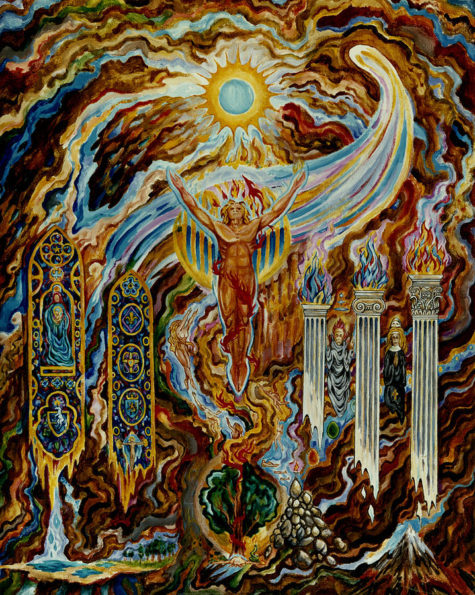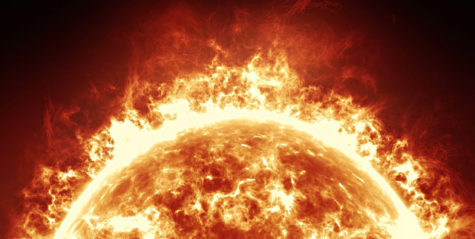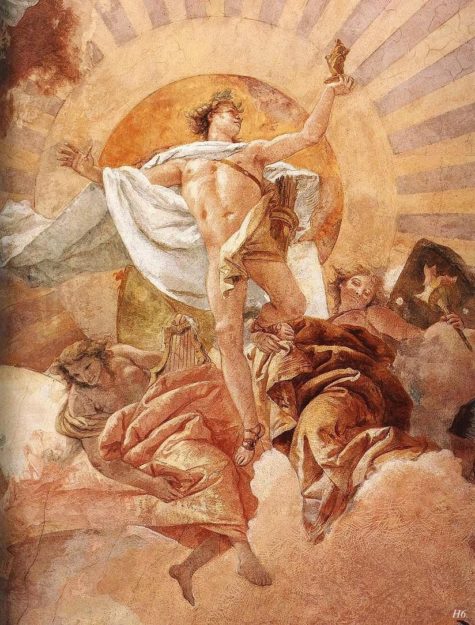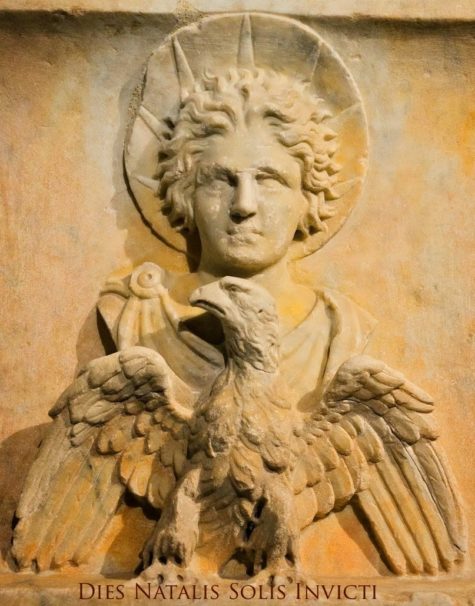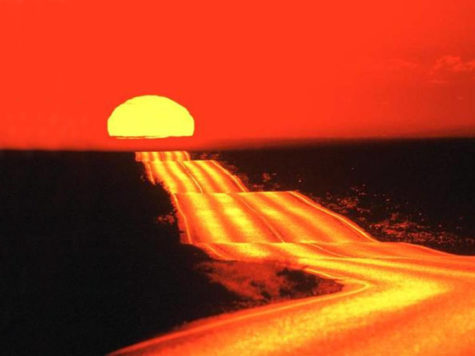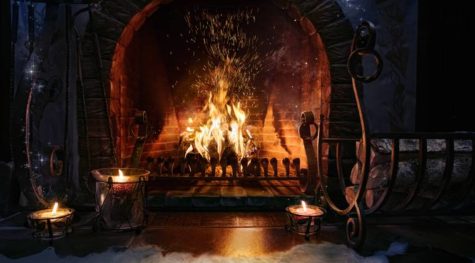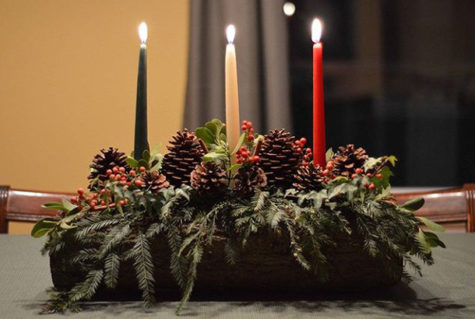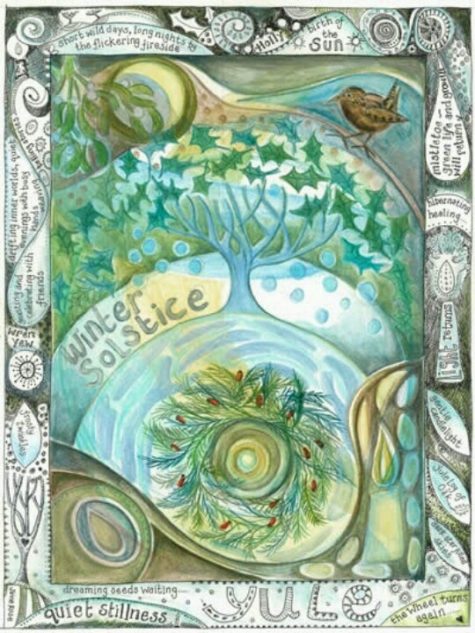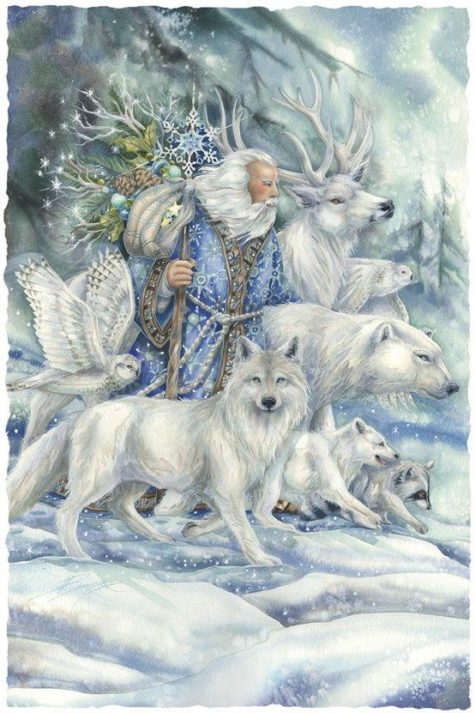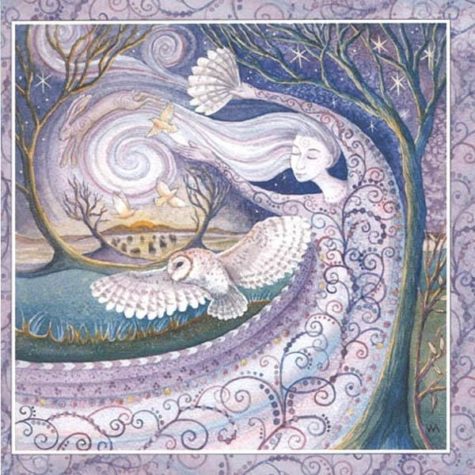Daily Archives: December 4, 2018
The Sun will “die” at midnight on December 21, but don’t panic, it will “rebirth” on midnight December 24. This occurs at the beginning of Winter every year for the past 4.6 billion years. It is called the Winter Solstice, “sun stood still”, and is considered the shortest day in the year in terms of hours of sunlight.
It is a three-day period when the hours of daylight are at its shortest and the hours of night (darkness) are at its longest. Noticeably, the sun progressively sets earlier each evening after June 22 (The Summer Solstice – longest hours of sunlight) and night fall comes the earliest on December 21. Hence daylight savings time put our clock one hour back to make up for the shorter hours of day light.
Needless to say, the Sun is vital to our life here on earth and is one of the most important star in our world. It is the nearest star to Earth and is believed to be formed 4.6 billion years ago. It is the most important source of energy for life on Earth and its diameter is about 109 times that of Earth, with mass about 330,000 times that of Earth. The sun accounts for about 99.86% of the total mass of the Solar System and is so large that about 1,300,000 planet Earths can fit inside of it.
Awesome.
WOW.
Worthy of Worshiping?
Sun Worship
Well, our ancestors did just that more than 9000 years ago and it is still being done today. The ancients selected December 21, the Winter Solstice as the ideal time to invoke the sun. Maybe if you were living in the north pole and had long, dark harsh winters to deal with you might want to invoke the sun too.
In the solar myth, the death of the “old sun” occurs as the length of daylight decreases and becomes its lowest at the Winter Solstice which begins on the midnight of December 21 (early morning December 22) and ends on Midnight December 24 (early morning December 25). The sun stop moving south on December 22, it is then at its lowest point in the Northern Hemisphere, residing in the vicinity of the Southern Cross. It stays at this lowest point for three days (December 22, 23, 24 appearing to not moving south or north and was considered “dead”).
It “returns to life” at midnight on December 24/ early morning December 25, when it begins its northern journey again and the hours of sunlight start to lengthen. Therefore, the ancients said that the SUN was born on December 25. As a result, festivals and feasts were done to honor Sol or Mithra.
Interestingly, on December 24, Sirius (star in the east and brightest star in the night sky) aligns with the three brightest Orion belt stars called the Three Kings, (Alnitak, Alnilam and Mintaka) and on December 25, these all point to the location where the sun will rise on earth that day. In essence, the three kings follow the star in the east to find the sunrise (birth of the sun).
Solar deities and Sun worship can be found throughout most of recorded history in various forms, including:
- Ra ~ Egypt,
- Mithra ~ Persia,
- Apollo ~ Rome
- Surya ~ India
- Amaterasu ~ Japan
- Sol ~ Germanic
- Tonatiuh ~ Aztec
- Jesus ~ Christianity
Birthday of the SUN or the SON?
As a Baptist, I grew up with the belief that December 25 is the birthdate of Jesus Christ and as such we worship and acknowledge it as Christmas. Indeed, Christmas is big— very big. The entire Island of Jamaica comes to a virtual standstill. Schools and colleges are closed; businesses shut down to give their employees time off; many families plan trips and get-togethers; Church attendance increase; and gifts are given by even those who were scrooge all year long. Maybe you recall, the Christmas Carol that even erroneously say “ Long time ago in Bethlehem, so the Holy Bible said, Mary’s boy child Jesus Christ, was born on Christmas Day”
However, recall all these activities were already being done in Rome, Babylon, Persia, Greece, and Egypt to acknowledge and worship the birth day of Sol Invicta (the Unconquered Sun) up to 4000 years before Jesus Christ was born. It then begs the question, whose birthday are we celebrating on December 25? Does Jesus the SON share the birthday with the SUN?
How did the birth of the Sun get changed?
According to scriptures, Jesus Christ was whipped, spat upon, publicly dishonored then killed by the Church (Caiaphas the high priest) and the State (Pilate the Roman governor). After Jesus’s death, his followers had to go “underground” as they too were meeting the same or worse fate than Christ. These “Followers of Christ” (not Christians as Christianity wasn’t start as yet) were stripped and flogged with whips, stoned to death, and persecuted.
Yet, despite the persecution, the “Followers of Jesus” went underground and their church started to flourish and soon became a major concern to the Roman government. They were blamed for spreading “mischief” that Jesus Christ was king and lord, and was crucified to save our souls. Followers of Christ were also accused of destabilizing the economy and threatening civil war.
To stop the possibility of civil war and at the same time keep the existing pagan occult worshipers, Constantine, in AD 326 at the Council of Nicaea, “married” Christ like sentiments (name and life story) with that of Rome’s mysticism and called it Christianity. This new “Christianity” became the official religion of Rome and the SUN was replaced by the SON with Isis and Osiris became Mary and Jesus. December 25 was then decreed as Jesus birthday with the Spring Equinox full moon in March/April designated as his death day.
In short, today’s Christianity is an unholy marriage of Roman Idolatry and Christ sentiments designed by Constantine to maintain religious and political if not economical order and harmony in the empire.
Sol Invictus (Unconquered Sun) is a very important star in our solar system without a doubt. As the main source of energy, we can understand the need to recognize it and maybe even glorify its daily presence in our lives. Many people deliberately and some unwittingly worship and glorify the SUN between December 21 – 25 to show appreciation.
If you are interested, a Ritual to Bring The Sun can be found in the Book of Shadows, and a number of invocations, prayers, and poetry specifically dedicated to the Sun can be found at Widdershins.
Honoring The Sun Every Day
One really great way to honor the Sun (and yourself) is with a series of body positions called Sun Salutations. An excellent time to begin this ritual is on the morning of the Winter Solstice just as the sun is rising, (facing east). If a sunrise Sun Salutation isn’t possible, but you want to include this in your morning routine, pick a time before breakfast, and that will be fine.
The Sun Salutation, (Surya Namaskar), is a series of 12 yoga postures performed in a single, graceful flow. Each movement is coordinated with the breath. Inhale as you extend or stretch, and exhale as you fold or contract. The Sun Salutation builds strength and increases flexibility. Different styles of yoga perform the Sun Salutation with their own variations. However, the flow presented below covers core steps used in most styles.
For the series below, a single round consists of two complete sequences: one for the right side of the body and the other for the left.
Sun Salutations
Even on days when you think you have no time for yoga, try and do at least one or two rounds of the Sun Salutation. You’ll feel the difference.
 1. Mountain:
1. Mountain:
Begin by standing in Mountain pose, feet about hip width apart, hands either by your sides or in prayer position. Take several deep breaths.
 2. Hands up:
2. Hands up:
On your next inhale, in one sweeping movement, raise your arms up overhead and gently arch back as far as feels comfortable and safe.
 3. Head to knees:
3. Head to knees:
As you exhale, bend forward, bending the knees if necessary, and bring your hands to rest beside your feet.
 4. Lunge:
4. Lunge:
Inhale and step the right leg back.
 5. Plank
5. Plank
Exhale and step the left leg back into plank position. Hold the position and inhale.
 6. Stick
6. Stick
Exhale and lower yourself as if coming down from a pushup. Only your hands and feet should touch the floor.
 7. Upward Dog
7. Upward Dog
Inhale and stretch forward and up, bending at the waist. Use your arms to lift your torso, but only bend back as far as feels comfortable and safe. Lift your legs up so that only the tops of your feet and your hands touch the floor. It’s okay to keep your arms bent at the elbow.
 8. Downward dog
8. Downward dog
Exhale, lift from the hips and push back and up.
 9. Lunge
9. Lunge
Inhale and step the right foot forward.
 10. Head to knees
10. Head to knees
Exhale, bring the left foot forward and step into head-to-knee position.
 11. Hands up
11. Hands up
Inhale and rise slowly while keeping arms extended .
 12. Mountain
12. Mountain
Exhale, and in a slow, sweeping motion, lower your arms to the sides. End by bringing your hands up into prayer position. Repeat the sequence, stepping with the left leg.
Put it all together, and it looks like this:
If the stick figures are not quite “doing” it for you, here’s a video:
Source: Notclif
- One practice consists of lighting and burning a Yule Log.
If you choose to burn one, select a proper log of oak or pine. Carve (with your Bolline) or chalk upon it a figure of the Sun (a rayed disc) or the Horned God (a horned circle). Set it alight in the fireplace at dusk, on Yule. This is a graphic representation of the rebirth of the God within the sacred fire of the Mother Goddess.
As the log burns, visualize the Sun shining within it and think of the coming warmer days. Traditionally, a portion of the Yule Log is saved to be used in lighting next year’s log. This piece is kept throughout the year to protect the home.
- The second type of Yule Log is not burned up, but rather holds three candles for burning.
Find a suitable log of oak or pine and flatten one side of it so that it will lay flat. Drill three holes in the side that is up, the correct size for holding three taper candles. The candles should be red, green and white (to represent the season), or green, gold and black (to represent the Sun God), or white, red and black (to represent the Great Goddess).
You can further decorate your Yule Log however you choose to – using holly, mistletoe, red ribbons and bows, or whatever you prefer.
Source: Citadel of the Dragons
Winter Solstice has been celebrated in cultures the world over for thousands of years. This start of the solar year is a celebration of Light and the rebirth of the Sun. In old Europe, it was known as Yule, from the Norse, Jul, meaning wheel.
Today, many people in Western-based cultures refer to this holiday as “Christmas.” Yet a look into its origins of Christmas reveals its Pagan roots.
Emperor Aurelian established December 25 as the birthday of the “Invincible Sun” in the third century as part of the Roman Winter Solstice celebrations. Shortly thereafter, in 273, the Christian church selected this day to represent the birthday of Jesus, and by 336, this Roman solar feast day was Christianized. January 6, celebrated as Epiphany in Christendom and linked with the visit of the Magi, was originally an Egyptian date for the Winter Solstice.
Most of the customs, lore, symbols, and rituals associated with “Christmas” actually are linked to Winter Solstice celebrations of ancient Pagan cultures. While Christian mythology is interwoven with contemporary observances of this holiday time, its Pagan nature is still strong and apparent.
Pagans today can readily re-Paganize Christmastime and the secular New Year by giving a Pagan spiritual focus to existing holiday customs and by creating new traditions that draw on ancient ways. Here are some ways to do this: Celebrate Yule with a series of rituals, feasts, and other activities.
In most ancient cultures, the celebration lasted more than a day. The ancient Roman Saturnalia festival sometimes went on for a week. Have Winter Solstice Eve and Day be the central focus for your household, and conceptualize other holiday festivities, including New Year’s office parties and Christmas visits with Christian relatives, as part of your Solstice celebration. By adopting this perspective, Pagan parents can help their children develop an understanding of the multicultural and interfaith aspects of this holiday time and view “Christmas” as just another form of Solstice.
Have gift exchanges and feasts over the course of several days and nights as was done of old. Party hearty on New Year’s Eve not just to welcome in the new calendar year, but also to welcome the new solar year.
Adorn the home with sacred herbs and colors. Decorate your home in Druidic holiday colors red, green, and white. Place holly, ivy, evergreen boughs, and pine cones around your home, especially in areas where socializing takes place.
Hang a sprig of mistletoe above a major threshold and leave it there until next Yule as a charm for good luck throughout the year. Have family/household members join together to make or purchase an evergreen wreath. Include holiday herbs in it and then place it on your front door to symbolize the continuity of life and the wheel of the year. If you choose to have a living or a harvested evergreen tree as part of your holiday decorations, call it a Solstice tree and decorate it with Pagan symbols.
Convey love to family, friends, and associates. At the heart of Saturnalia was the custom of family and friends feasting together and exchanging presents. Continue this custom by visiting, entertaining, giving gifts, and sending greetings by mail and/or phone. Consider those who are and/or have been important in your life and share appreciation.
Reclaim Santa Claus as a Pagan Godform. Today’s Santa is a folk figure with multicultural roots. He embodies characteristics of:
- Saturn (Roman agricultural god)
- Cronos (Greek god, also known as Father Time)
- Holly King (Celtic god of the dying year)
- Father Ice/Grandfather Frost (Russian winter god)
- Thor (Norse sky god who rides the sky in a chariot drawn by goats)
- Odin/Wotan (Scandinavian/Teutonic All-Father who rides the sky on an eight-legged horse)
- Frey (Norse fertility god)
- Tomte (a Norse Land Spirit known for giving gifts to children at this time of year)
Santa’s reindeer can be viewed as forms of Herne, the Celtic Horned God. Decorate your home with Santa images that reflect His Pagan heritage.
Honor the Goddess as Great Mother. Place Pagan Mother Goddess images around your home. You may also want to include one with a Sun child, such as Isis with Horus. Pagan Goddess forms traditionally linked with this time of year include:
- Tonantzin (Native Mexican corn mother)
- Holda (Teutonic earth goddess of good fortune)
- Bona Dea (Roman women’s goddess of abundance and prophecy)
- Ops (Roman goddess of plenty)
- Au Set/Isis (Egyptian/multicultural All Goddess whose worship continued in Christian times under the name Mary)
- Lucina/St. Lucy (Roman/Swedish goddess/saint of light)
- Befana (Italian Witch who gives gifts to children at this season)
Honor the new solar year with light. Do a Solstice Eve ritual in which you meditate in darkness and then welcome the birth of the sun by lighting candles and singing chants and Pagan carols.
If you have a indoor fireplace or an outdoor fire circle, burn an oak log as a Yule log and save a bit to start next year’s fire. Decorate the inside and/or outside of your home with electric colored lights. Because of the popularity of five pointed stars as holiday symbols, this is a good time to display a pentagram of blue or white lights.
Contribute to the manifestation of more wellness on Planet Earth. Donate food and clothing to poor in your area. Volunteer time at a social service agency. Put up bird feeders and keep them filled throughout the winter to supplement the diets of wild birds. Donate funds and items to non-profit groups, such as Pagan/Wiccan churches and environmental organizations. Meditate for world peace. Work magic for a healthier planet. Make a pledge to do some form of good works in the new solar year.
by Selena Fox
